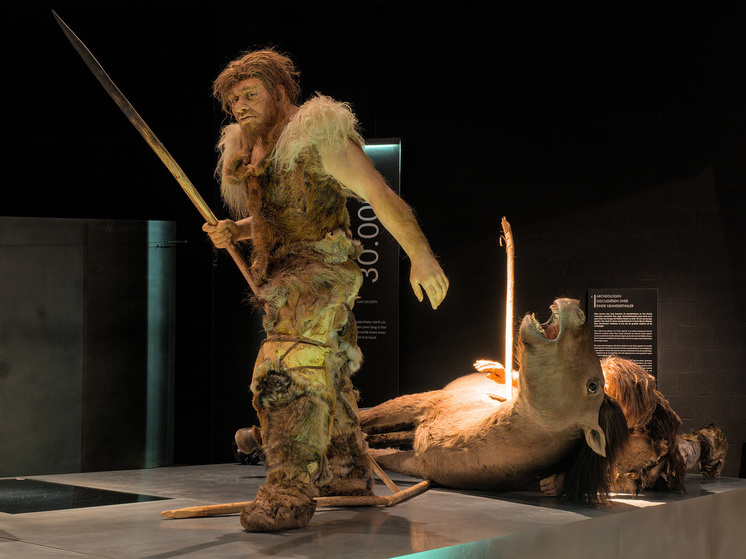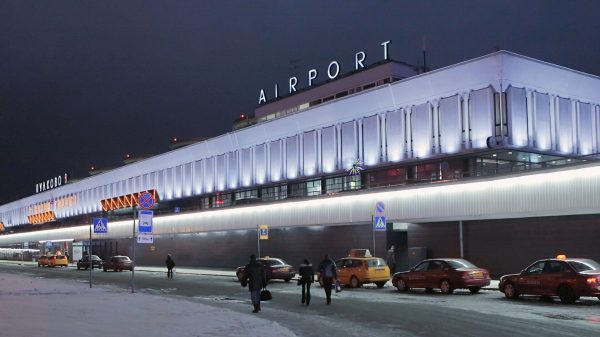How did the Neanderthals disappear?
The discovery in 2010 that ancient humans and Neanderthals once interbred was a scientific sensation – a genetic legacy that was found to play an important role in modern humans, influencing circadian rhythms, the functioning of the immune system and how some people feel pain. Scientists, however, have found it surprisingly difficult to trace gene flow in the opposite direction: how the mixing of the two groups might have contributed to the formation of the Neanderthals, who died out about 40,000 years ago. Using modern methods, the new study paints a clearer picture.

An analysis published in mid-July in the journal Science found that the two groups exchanged DNA at several points over the past 250,000 years, shedding light on how Neanderthals disappeared and potentially rewriting the story of how and when our Homo sapiens ancestors left Africa, CNN reports.
“To date, most genetic evidence suggests that modern humans emerged in Africa 250,000 years ago, stayed put for the next 200,000 years, and then decided to leave Africa and populate the rest of the world 50,000 years ago,” said Professor Joshua Akey, the study’s senior author.
“But genetics is essentially blind to anything that doesn’t lead to the origins of modern populations. What I think is quite interesting about this paper is that it provides genetic information about these out-of-Africa dispersals that we haven’t been able to see before,” Akey said.
The findings suggest that very early human history was complex, with modern humans likely interacting with Neanderthals and other types of archaic humans, including the enigmatic Denisovans, far more frequently than previously thought since our emergence as a species around 250,000-300,000 years ago.
By comparing DNA sequences in databases, scientists can reconstruct the relationships between different populations or species, and because genetic change occurs at a constant rate over the course of a generation, geneticists can calculate the time that passed between the two groups exchanging DNA, like the ticking of a molecular clock.
The study found that humans left Africa, encountering and interbred with Neanderthals in three waves: the first about 200,000 to 250,000 years ago, shortly after the earliest Homo sapiens fossils appeared in Africa; the second about 100,000 years ago; and the last about 50,000 to 60,000 years ago.
The most recent case is widely known and was first identified in 2010, when Nobel Prize-winning geneticist Svante Pääbo sequenced the first Neanderthal genome. However, new research shows that the first two waves were significantly different from the third, a massive migration that eventually brought modern humans to every corner of the globe.
The scientists found that the percentage of Homo sapiens DNA in the Neanderthal genome may have reached as high as 10% more than 200,000 years ago and decreased over time, with an average of 2.5% to 3.7%.
A similar study published last year found genetic traces of a collision between the two groups about 250,000 years ago, but the fact that Homo sapiens DNA appeared in Neanderthals about 100,000 years ago is a new discovery, said Lauritz Skov, a geneticist and postdoctoral researcher at the University of California, Berkeley, who was not involved in the study.
“What seems certain is that the histories of humans and Neanderthals are much more closely intertwined than we previously thought,” he wrote in an email.
During the two previous waves of interbreeding, the Neanderthal population absorbed human genes, and the offspring remained within Neanderthal groups, according to the new study.
According to Akey, these early mating episodes, which resulted from the migration of small groups of Homo sapiens—pioneers who failed to establish themselves permanently in Africa—left little trace in the gene pool of modern human populations but had a major impact on the Neanderthal genome.
“I think the simplest explanation is that it reflects changes in population size over time,” he added.
“Early modern humans were initially trickling out of Africa, and the Neanderthal population was large enough that they were able to essentially absorb these initial human dispersals and their genes into the Neanderthal population,” Akey explained.
However, when Homo sapiens left Africa about 60,000 years ago on a long migration around the world, the offspring resulting from Homo sapiens' encounters with Neanderthals grew up in modern human populations, and their genetic imprint remained in the human gene pool, influencing our lives today, he added.
In the study, the team used machine learning techniques to decipher and sequence the genomes of three Neanderthal remains that dated back 50,000 to 80,000 years and were found in three different locations: Vindija, Croatia, and the Denisova and Chagyrskaya caves in the Altai Mountains. The researchers then compared this data with the genomes of 2,000 modern humans.
“We have developed a system to determine whether there was a genetic transfer from humans to Neanderthals, to estimate how much modern human sequence is contained in Neanderthal genomes, and to identify specific locations in the Neanderthal genome that contain … modern human sequences,” Akey said.
“There are several Homo sapiens fossils that may reflect earlier, less successful journeys of the species from Africa to the Middle East and Europe,” said Chris Stringer, a leading research fellow in human evolution at the Natural History Museum in London, who was not involved in the study.
These relics include a Homo sapiens fossil found in the Apidima cave in southern Greece dating back 210,000 years, and remains found in the Israeli settlements of Skhul and Qafzeh. The fossils found in Israel had “primitive features” such as larger eyebrows, flatter skulls and different chins.
“I interpreted (these) traits as being retained in more primitive, non-Neanderthal ancestors, but they could also be signs of Neanderthal gene flow, and perhaps these traits should be looked at again in light of this new work,” Stringer says.
The population dynamics revealed by this study may be a major factor in the disappearance of the Neanderthals 40,000 years ago, Akey says. The researchers’ analysis suggests that the Neanderthal population at the time was 20 percent smaller than previously thought.
“The human populations were larger, and like waves crashing on the shore, they eventually wiped out the Neanderthals,” Akey said. The Neanderthal gene pool was likely absorbed into the human population during the final wave of interbreeding.
“Extinction is a complex process, so I’m hesitant to say that’s the only explanation… but I think the absorption of Neanderthals into human populations probably explains a significant portion of the Neanderthal extinction,” he added.
Stringer agrees that the final phase of interbreeding may have contributed to the Neanderthal extinction, as the Neanderthal population became even smaller and less diverse as Neanderthal DNA entered the larger human gene pool.
“I think that’s an important point,” Stringer said. «Accounting for the increased genetic diversity of Neanderthals as a result of interbreeding with Homo sapiens also significantly reduces their effective population size, adding further evidence that late Neanderthals may already have been an endangered species even without competition from a growing Homo sapiens population.»


























































Свежие комментарии